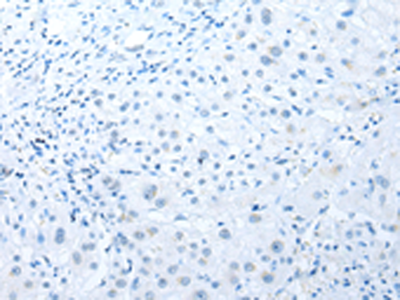| Cat.#: S218148 |
| Product Name: Anti-C1QTNF3 Rabbit Polyclonal Antibody |
| Synonyms: CORS; CORCS; CTRP3; CORS26; C1ATNF3; CORS-26 |
| UNIPROT ID: Q9BXJ4 (Gene Accession – BC120990 ) |
| Background: C1qTNF3 (Complement C1q TNF-related protein 3/CTRP3; also CORS26 and cartonectin) is a 30-32 kDa, secreted member of the C1q and TNF-related protein (CTRP) superfamily of molecules. It is expressed by a wide variety of cells, including smooth muscle cells, fibroblasts, adipocytes, monocytes and proliferating chondrocytes. C1qTNF3 is an anti-inflammatory agent that apparently blocks LPS activation of mononuclear cells. It also has marked proliferative activity on diverse cell types such as vascular smooth muscle, chrondrocytes, and endothelium. Finally, C1qTNF3 is known to act on hepatocytes and suppress hepatocyte gluconeogenesis. Mature human C1qTNF3 is 224 amino acids (aa) in length (aa 23-246). It possesses an N-terminal collagen-like domain (aa 51-113) followed by a C-terminal globular region (aa 113-246). C1qTNF3 is monomeric when intracellular, but forms a 90 kDa homotrimer plus higher-order oligomer when secreted. There are at least two potential isoform variants. One is 40-42 kDa, glycosylated, and contains a 73 aa insertion after Glu28, while a second shows concurrent deletions of aa 46?69 and 82-105. The longer 40 kDa isoform is reported to form heterotrimers and oligomers with the standard 30 kDa isoform. This has the effect of protecting the standard isoform from proteolysis. Over aa 24-246, human C1qTNF3 shares 99% aa sequence identity with mouse C1qTNF3. |
| Immunogen: Fusion protein of human C1QTNF3 |
| Applications: ELISA, WB, IHC |
| Recommended Dilutions: IHC: 25-100;WB: 200-1000;ELISA: 5000-10000 |
| Host Species: Rabbit |
| Clonality: Rabbit Polyclonal |
| Isotype: Immunogen-specific rabbit IgG |
| Purification: Antigen affinity purification |
| Species Reactivity: Human, Mouse |
| Constituents: PBS (without Mg2+ and Ca2+), pH 7.4, 150 mM NaCl, 0.05% Sodium Azide and 40% glycerol |
| Research Areas: Metabolism |
| Storage & Shipping: Store at -20°C. Avoid repeated freezing and thawing |

Immunohistochemistry analysis of paraffin embedded Human liver cancer tissue using 218148(C1QTNF3 Antibody) at a dilution of 1/25(Secreted). | 
In comparision with the IHC on the left, the same paraffin-embedded Human liver cancer tissue is first treated with the fusion protein and then with 218148(Anti-C1QTNF3 Antibody) at dilution 1/25. | 
The image on the left is immunohistochemistry of paraffin-embedded Human lung cancer tissue using 218148(Anti-C1QTNF3 Antibody) at a dilution of 1/25. | 
In comparision with the IHC on the left, the same paraffin-embedded Human lung cancer tissue is first treated with fusion protein and then with D223823(Anti-C1QTNF3 Antibody) at dilution 1/25. | 
Gel: 12%SDS-PAGE, Lysate: 40 μg;
Lane: Human colorectal cancer tissue;
Primary antibody: 218148(C1QTNF3 Antibody) at dilution 1/200;
Secondary antibody: Goat anti rabbit IgG at 1/8000 dilution;
Exposure time: 1 minute | |
|















